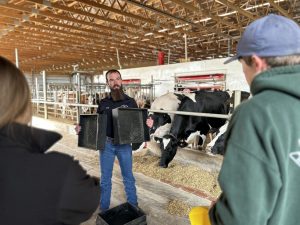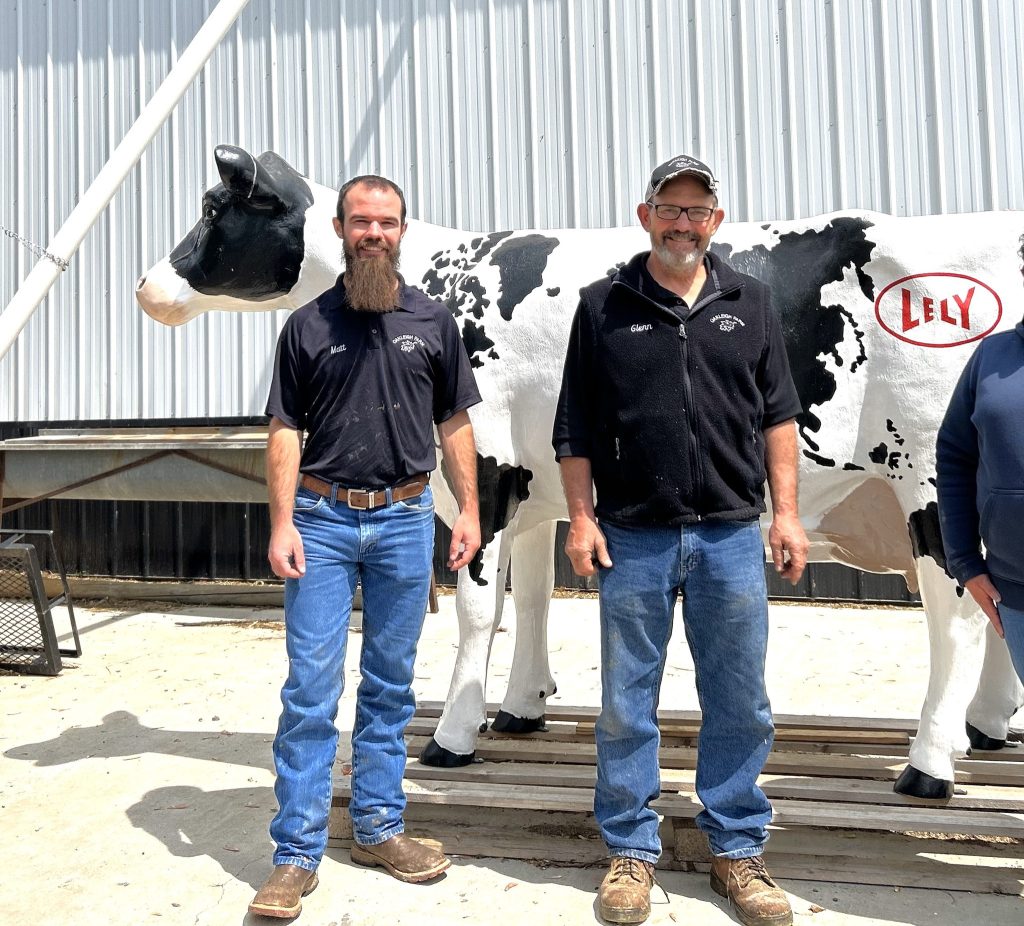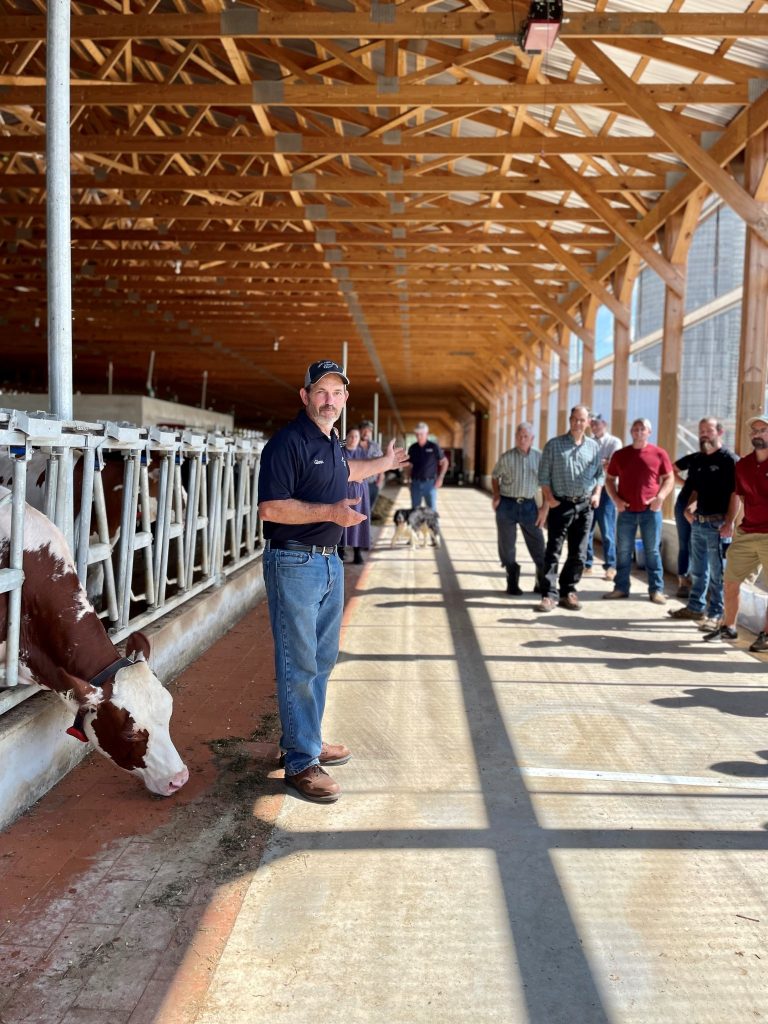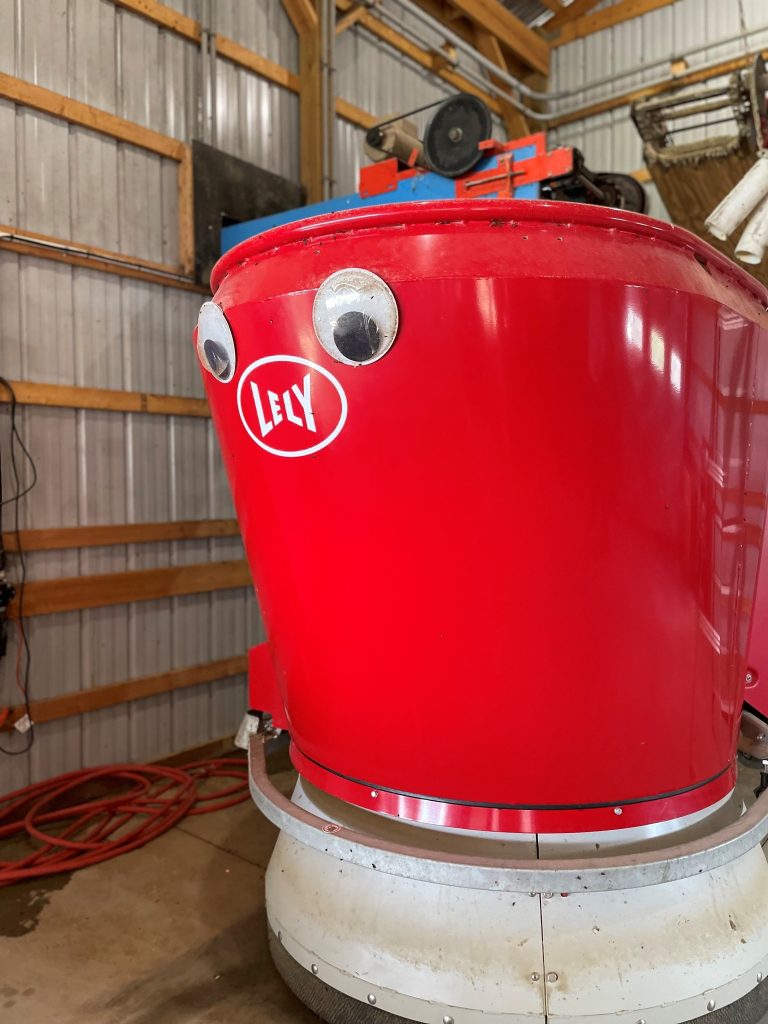
Matt Brake Was Interviewed in the New Episode of “Cow-Side Conversations”
In the Center for Dairy Excellence’s latest episode of the “Cow-Side Conversations” podcast, Matt Brake of Oakleigh Farm in Franklin County, Pennsylvania shares how they went from a true, 1950’s era dairy farm to a fully-automated, 21st century dairy operation in less than a year. Matt opens up about how a devastating barn fire in 2019 forced his family to decide whether they were going to rebuild or leave the dairy industry altogether. During the podcast interview, Matt shares how their family ultimately decided to invest in innovative technology, including a vector feeding system, robotic milkers, automated curtains and fans, and discovery manure collectors. As the first fully automated Lely red barn in Pennsylvania, Matt describes some of the challenges and learning curves to making this type of investment. He also shares how the technology has helped with labor costs, given them more time to manage at the cow level, and allowed them to focus on herd health and feed quality.
Matt opens the podcast by describing the size and scale of their dairy operation. His father Glenn, Matt, and other family members milk 120 cows and farm 400 acres. The family raises their own heifers and calves, and their herd of Holstein cows is 100 percent registered. While Matt and his dad share many of the cow-related responsibilities, his dad focuses on the breeding decisions and Matt manages the dry cows and feeding programs.
“It’s a big cohesive effort like you typically find on these family dairy farms,” Matt shared in the podcast.
About five years ago, Matt had graduated from college and was deciding if he was coming back to the farm. At the time, Oakleigh Farm had a six-stall parlor that was built in 1952, and they were researching new robotic technology.
“We had looked at retro-fitting robots and started looking into them seriously around 2017. With the way the dairy economy was, though, we put it in the five-year plan. That five-year plan kept getting bumped down the road,” he shares. “We looked at implementing some other technology like a vector feeding system into our existing operation, and that was looking a little more feasible. But then in December of 2019, we had a barn fire.”
During the podcast interview, Matt shares that his family was fortunate that the fire happened in the afternoon when they were already done milking. All the cows were out of the barn at the time, so there were no injuries to the herd. For the next seven months, their cows were housed at a neighboring facility as they navigated how they were going to move forward. While the fire company was able to save the parlor, the barn was a total loss along with some equipment.
“It was a really tough decision to decide, ‘Are we going to rebuild or is this an opportunity to leave the dairy industry and look at some other opportunities?’” Matt explains. “Once we decided as a family that we did want to rebuild and realized the robots would be an opportunity, we jumped completely into that. We had a clean slate. It opened up some different opportunities for the future.”

One of the first decisions they made was investing in an automated vector feeding system. Before the fire, Matt says they did not have a TMR system. They fed out of conveyers directly from the silos, put feed out four times a day to keep it in front of the cows, and let the conveyers do the mixing. As they rebuilt, an automated feeding system helped their financials more than a new TMR mixer would have.
“When we started feeding the cows with a tractor and TMR mixer in a more modern-style barn with a feed lane after the fire, that’s when we decided the vector feeding system was definitely coming in,” Matt says. “We looked at the amount of time we were spending mixing feed. The payback was so much quicker than what we would have seen with a TMR mixer and a new tractor. In our case, [the payback] was about three years based off equipment, fuel and labor usage — not accounting for any increased benefit to the cows.”
One of the cow-related benefits to the vector feeding system is the body conditions of their herd. Matt says the technology helps them be more precise with how much dry matter their cows are eating, and they have seen a difference in their cows’ weights.
“One of the unknown benefits we didn’t even realize is the body conditions of the cows. As far as the silage amounts were concerned, [in the old barn] we weren’t weighing anything and we were eyeballing it with our silos. It wasn’t as precise as seeing that exact weight,” he explains. “Now, we’re loading within a 5-10 percent margin of error. Even though we always kept feed in front of the cows, we’re noticing an extra 200 pounds on our cows now. And our cows weren’t underweight to begin with.”

Just as the vector feeding system provides in-depth data, Matt and his family made the decision to invest in two robotic milkers, primarily for the herd health benefits. The robots provide real-time information on everything from milk production and butterfat to components and somatic cell count.
“Being a family operation, we weren’t going to see the labor savings with the milking robots like some other operations would. We were able to pencil it out [financially] on the herd health side,” Matt shares in the podcast. “Every time that cow walks into the robot, we’re getting fat and protein, milk weights, temperature, color, and somatic cell count at the cow level. We’re collecting all this information daily. Having all that as you start to diagnose cows and work with the veterinarian, it’s just amazing.”
In terms of milk production, the Brake family has seen an increase in both production and the genetic potential of their herd with the robotic technology.
“We have seen an increase in milk production in this new barn. It’s tough to pinpoint how much of that is cow comfort versus milking close to three times a day or the feeding system. I think it all ties together,” Matt adds. “I’m really encouraged. I’ve seen what we have accomplished over the last three years and how well the herd has adapted and continues to evolve. Their genetic potential is truly getting unlocked in a barn like this.”
Along with herd health and feed quality, Matt says the robots have helped fix their labor costs as well. They considered the true cost of employees when deciding whether to invest in the technology.
“It’s a big financial leap. There’s no way around it. The upfront costs are high, but the way we looked at it, we’re pre-paying our labor for the next 10-15 years,” Matt says. “I haven’t met anybody that said ‘My employee came to me and asked me to pay them less money this month.’ For my robots, I paid that labor cost upfront. I have maintenance and upkeep costs, but we would have had those with a parlor.”
With their old set-up, the Brake family was utilizing 1950s technology such as DHIA testing and record-keeping, but they did not have a herd management software or activity monitors. They also had manual take-offs in the parlor. While the technology has been a learning curve, they are able to customize it and focus on the data they need. For example, Matt says his dad knows how to evaluate the data and see what cows are in heat while the robots sort them. Matt looks at the feeding reports more closely.
“I think people look at robots and think the technology is so overwhelming. At first, it was a little overwhelming [for us], but it has amazed me how user-friendly and customizable it is,” Matt shares. “Yes, there is a lot of information, and you can get overloaded with data if you let yourself. Depending on what you want to focus on, you can look at different reports that filter out information for you.”

The robotic technology has also made dreams of growth and expansion more of a reality for the family. Matt is currently brainstorming a newer style calf barn and a robotic calf feeder. As they look to the future, the robots do not tie them to a milking schedule and allow them to focus more on the cow level.
“We’re able to manage more at the cow level instead of at the parlor level. My dad is a phenomenal cow guy. When you look at expansion, all of a sudden managing 120 cows with a smaller labor force isn’t that difficult,” Matt says. “We’re decent cow managers, but our cows have really stood behind us, too. Even after the fire, I think about how our cows handled that stress. They stuck with us through a lot. The day we moved into the robot barn and unloaded the cows off the trailer, there was just a sense of peace within the cows. You could tell they knew they were home.”
Without their family, friends and community, and the team of industry professionals around them, Matt says Oakleigh Farm would not be where they are today.
“With the fire, we truly had the best-case scenario for a worst-case situation. At the end of the day, I’m so thankful for this opportunity we’ve been given,” he adds. “It’s a goal of mine to continue to push the envelope. We made this commitment. We’re going to make this work. Not only are we going to make this work, but we’re going to succeed in ways I never even dreamed of.”
To listen to the full podcast interview with Matt, visit www.centerfordairyexcellence.org/podcast. The podcast is also available on Spotify, Apple Podcasts, and Amazon Music. With a new episode released each month, Matt’s interview is the 10th episode in the third season. The podcast was designed to share real-time farmer insight, tricks of the trade, and inspiring stories from dairies across Pennsylvania.

